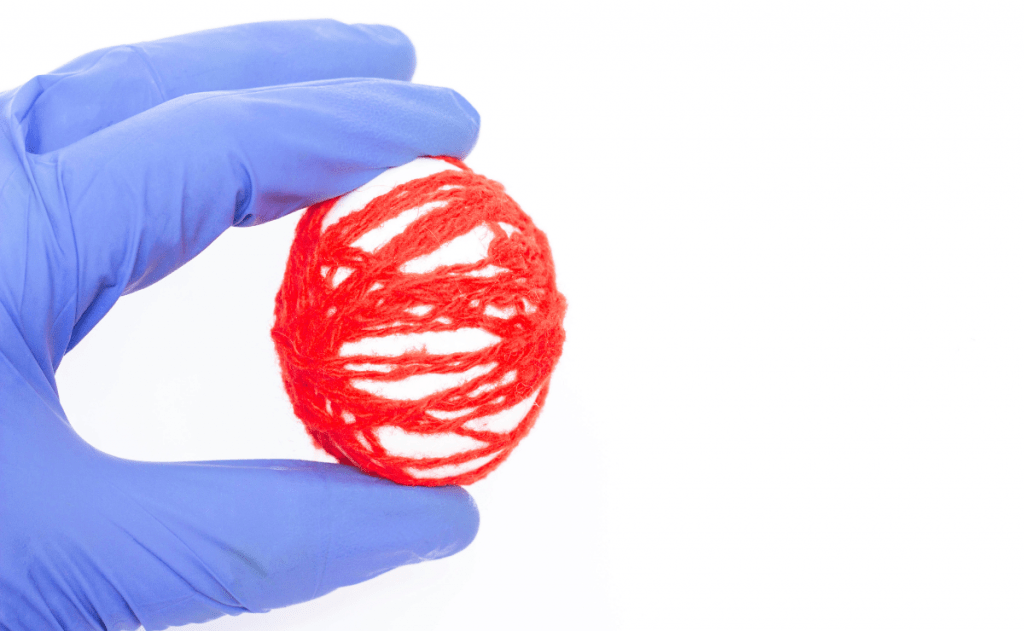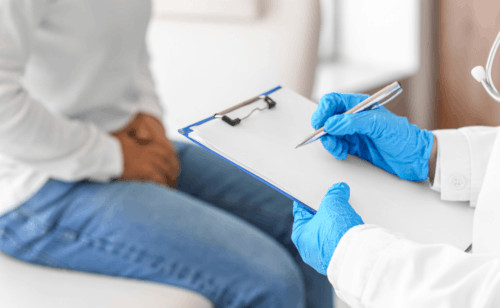Varicocele
Testicular varicocele is the dilatation of the veins surrounding the testicle inside the scrotum (flaccid skin that supports the testicles). These veins drain the testicles carrying blood but, when there is a malfunction of the valves of the veins, which allow proper blood flow, they dilate and the blood accumulates forming swelling in the veins.
Most frequently, varicocele occurs unilaterally, that is, only in one testicle (usually the left testicle due to the position of the testicular vein), but there are cases of bilateral varicocele in which both testicles are affected.
Varicoceles usually form during puberty and develop over time. It is more common in tall, thin boys.
Symptoms and causes of varicocele
It is not known exactly what causes varicocele. It is due to a slowed flow of blood through the spermatic veins, which are the veins that collect blood from the testicle, probably due to a problem in the venous valves.
Some studies suggest that it has a hereditary factor, so those boys whose fathers or brothers have suffered from this venous inflammation in the testicles are more likely to go through the same.

Although varicoceles do not usually cause symptoms, some patients report discomfort, pain, a "bag of worms" sensation or pinching when they spend many hours on their feet, perform extreme physical exertion or during periods of heat, in the same way that happens with varicose veins in the legs. This is due to the fact that the blood must make an extra effort to circulate correctly due to the force of gravity.
Since the testicle needs specific conditions for its correct development, these varicose veins close to the testicle can alter its growth and function, affecting in some cases future fertility.
In older men, one of the possible causes is the presence of a renal tumor. For this reason, patients over 40 years of age with varicocele should request a thorough examination to rule out any type of tumor.

Diagnosis of varicocele
Being symptomless, it is usually detected by chance during a routine evaluation or fertility examination in adult patients.
In children, the diagnosis is made by physical examination in consultation and by performing a Doppler ultrasound of the scrotum, in which we will assess the size and development of the testicles and the presence of varicose dilatations that increase with increasing abdominal pressure (Valsalva maneuvers).
Varicocele treatment
Generally, it is not necessary to treat varicocele, since in a great number of cases it does not represent any risk or even its existence is not noticed.
The urologist may suggest annual check-ups to monitor any changes and recommend surgery in the following cases:

- One testicle shows developmental delay.
- There is chronic pain that is not relieved by analgesics.
- There is a low sperm count or other irregularities in the sperm (usually only tested in adults).
Surgery
The surgical procedure to treat varicocele may be part of the fertility treatment plan and involves sealing the affected vein to redirect blood flow to healthy veins. This is done on an outpatient basis and the patient can usually go home the same day of the procedure.
There are two approaches to this surgery:
Microscopic varicocelectomy. The surgeon makes a tiny incision in the lower groin and with a powerful microscope, identifies and ligates several small veins. The procedure takes 2 to 3 hours.
Laparoscopic varicocelectomy. The surgeon uses a video camera and several surgical instruments connected to probes that pass through very small incisions in the lower abdomen. Because the network of veins is less complex over the groin, there are fewer veins to ligate. The procedure takes 30 to 40 minutes.
Pain from the surgery is usually mild, but may last for several days or weeks. Your doctor may prescribe pain medication for a limited period of time. You will probably be able to return to work within a week and resume physical activity two weeks after surgery.
Embolization
As an alternative to surgery, embolization can be performed, which is less invasive and uses imaging guidance and a catheter to place small coils and/or a liquid substance into a vein to divert blood flow away from a varicocele. The procedure takes about an hour. The recovery period is brief with mild pain.
Complications of surgery
Varicocele repair may carry with it some risks such as:
- Accumulation of fluid around the testicles: in up to 8% of cases, and depending on the technique used and the characteristics of the patient, there may be an accumulation of fluid in the testicle, which we call hydrocele. This is due to the fact that the lymphatic vessels are very close to the veins of the testicle and, due to surgical manipulation, their function can be altered and fluid can accumulate in the scrotal sac. Most hydroceles resolve on their own with time, and in those in which they persist, surgical intervention may be necessary to empty the fluid accumulation.
- Recurrence.
- Infection.
- Damage to an artery
- Chronic testicular pain.
- Accumulation of blood around the testicle (hematoma).
Team of the Varicocele Unit


 +34 912 627 104
+34 912 627 104 Contact
Contact







